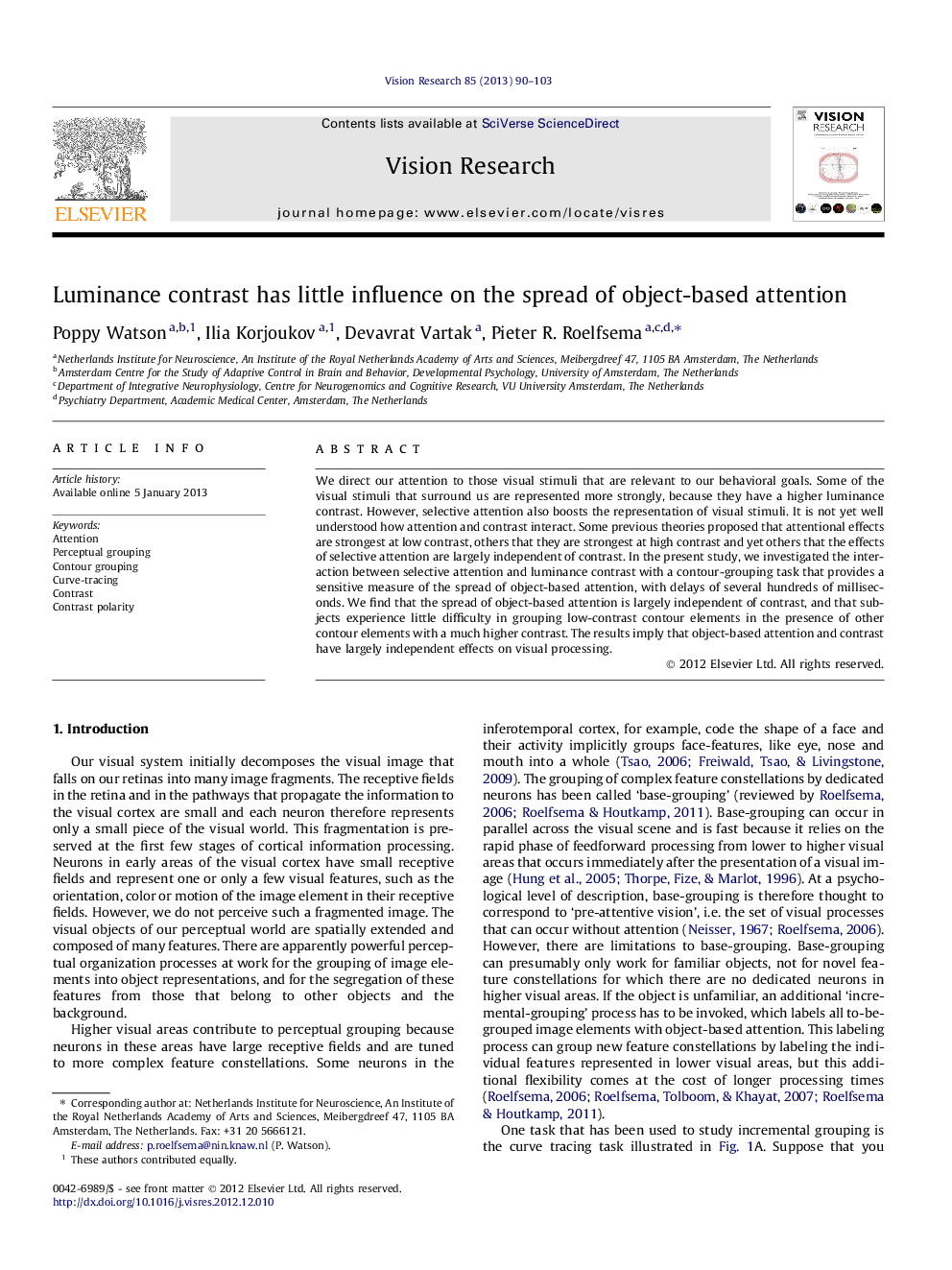| Article ID | Journal | Published Year | Pages | File Type |
|---|---|---|---|---|
| 4033790 | Vision Research | 2013 | 14 Pages |
We direct our attention to those visual stimuli that are relevant to our behavioral goals. Some of the visual stimuli that surround us are represented more strongly, because they have a higher luminance contrast. However, selective attention also boosts the representation of visual stimuli. It is not yet well understood how attention and contrast interact. Some previous theories proposed that attentional effects are strongest at low contrast, others that they are strongest at high contrast and yet others that the effects of selective attention are largely independent of contrast. In the present study, we investigated the interaction between selective attention and luminance contrast with a contour-grouping task that provides a sensitive measure of the spread of object-based attention, with delays of several hundreds of milliseconds. We find that the spread of object-based attention is largely independent of contrast, and that subjects experience little difficulty in grouping low-contrast contour elements in the presence of other contour elements with a much higher contrast. The results imply that object-based attention and contrast have largely independent effects on visual processing.
• We tested the interaction between object-based attention and contrast with a curve-tracing task. • Stimulus contrast had little effect on the spread of object-based attention. • Attentional selection of low contrast contours benefits from high contrast distractors. • Object-based attention and luminance contrast have separable effects on performance.
